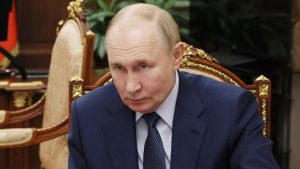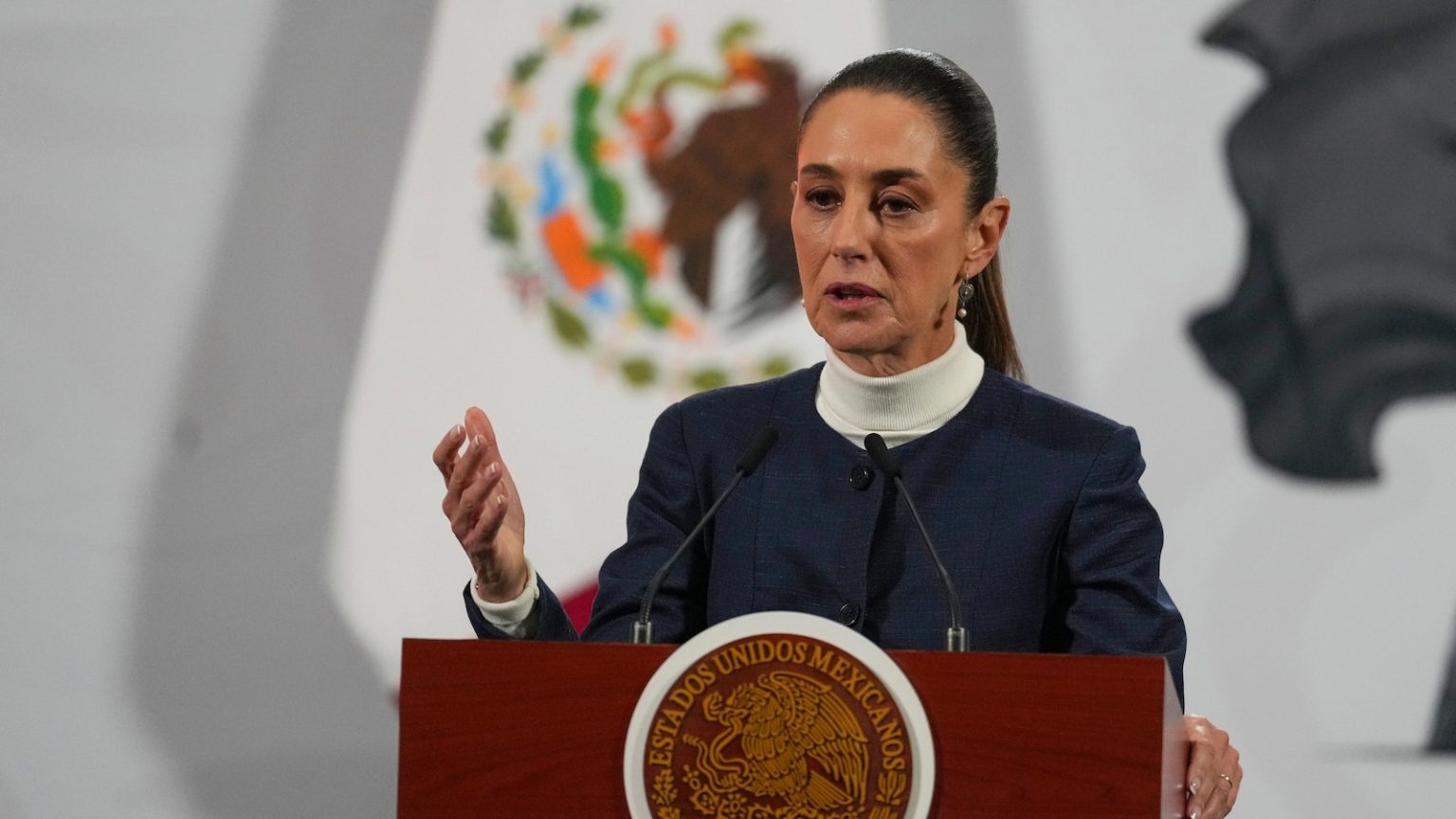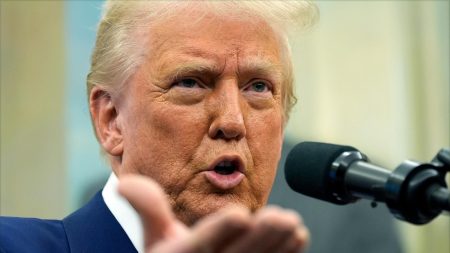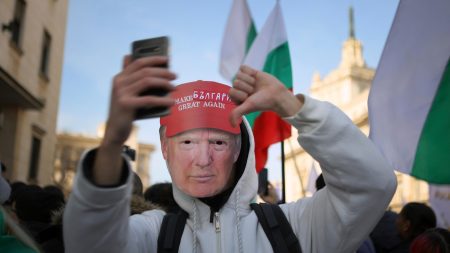Trump Agrees to 30-Day Tariff Pause with Mexico and Canada
In a dramatic turn of events, President Donald Trump agreed to a 30-day pause on his threatened tariffs against Mexico and Canada, the United States’ two largest trading partners. This decision came after both countries took steps to address Trump’s concerns about border security and drug trafficking. The pause follows a tense period that had brought North America to the brink of a trade war, which could have severely impacted economic growth, driven up prices, and strained two of the U.S.’s most critical partnerships.
Trump announced the pause on social media, expressing his satisfaction with the initial outcome and declaring, “FAIRNESS FOR ALL!” Canadian Prime Minister Justin Trudeau also confirmed the pause, stating that it would occur “while we work together.” Trudeau outlined several commitments, including the appointment of a fentanyl czar, the designation of Mexican cartels as terrorist groups, and the establishment of a joint task force with the U.S. to combat organized crime, fentanyl trafficking, and money laundering. Mexico similarly agreed to a pause, allowing time for negotiations on drug smuggling and illegal immigration.
Despite this temporary reprieve, the broader trade tensions remain unresolved. Trump has still plans to impose a 10% tariff on Chinese imports, and he has signaled that tariffs on the European Union could be next. This uncertainty has left the global economy on edge, wondering whether a crisis has been averted or if a potential catastrophe still looms in the coming weeks.
A Glimpse into the High-Stakes Negotiations
The 30-day pause with Mexico and Canada has provided a much-needed cool-down period after days of escalating tensions. Trump had initially threatened to impose 25% tariffs on imports from both countries, with an additional 10% tariff specifically on Canadian oil, natural gas, and electricity. While Trump had hinted at these measures for some time, the announcement still shocked investors, lawmakers, and businesses.
Multiple economic analyses warned that the tariffs could harm growth, reduce incomes, and inflate prices. However, Trump remained adamant that tariffs were a necessary tool to pressure other nations into addressing his concerns about illegal immigration, fentanyl smuggling, and what he perceives as a lack of respect for the U.S. Trump described his conversation with Mexican President Claudia Sheinbaum as “very friendly” and expressed optimism about the upcoming negotiations.
The talks with Mexico will be led by a team of high-level U.S. officials, including Secretary of State Marco Rubio, Treasury Secretary Scott Bessent, and Commerce Secretary nominee Howard Lutnick. Sheinbaum, meanwhile, announced that Mexico would deploy 10,000 National Guard members to its northern border and work with the U.S. to stop the trafficking of high-powered weapons into Mexico. This move mirrors Mexico’s response in 2019, when it sent 15,000 soldiers to its border to avoid tariffs under Trump’s administration.
Canada’s Struggle to Avoid Tariffs
While Mexico managed to secure a pause, Canada’s situation appeared more precarious for much of Monday. A senior Canadian official, speaking anonymously, expressed doubt that Canada could avoid the tariffs, citing the Trump administration’s shifting demands. This uncertainty was evident in Trump’s own comments when he was asked what Canada could offer to prevent the tariffs. “I don’t know,” Trump replied, even joking about making Canada the 51st state—a remark that underscored the ongoing antagonism between the two nations despite decades of friendship.
Canada’s commitments, including the creation of a fentanyl czar and the formation of a joint strike force with the U.S., were key to securing the pause. However, the fluidity of the situation has left many in Canada and the U.S. wary of what lies ahead. The tariffs, if reimposed, could have significant economic implications for both countries, particularly for industries that rely heavily on cross-border trade.
The Broader Economic and Global Implications
The temporary reprieve from tariffs has eased some fears of an imminent trade war, but the global economy remains on high alert. Financial markets, businesses, and consumers are bracing for the possibility of further tariffs, which could disrupt global trade and drive up inflation. The situation has highlighted the deep uncertainty surrounding Trump’s tariff strategy, which has been both praised and criticized for its unpredictability.
Trump has repeatedly emphasized the power of tariffs as a negotiating tool, asserting that the U.S. economy’s size and influence make them an effective leverage point. “Tariffs are very powerful both economically and in getting everything else you want,” Trump said. “Tariffs for us, nobody can compete with us because we’re the pot of gold.” However, critics argue that tariffs could backfire, harming U.S. businesses and consumers while failing to achieve their intended goals.
The situation has also cast a spotlight on the human impact of the tariffs. For example, Stew Leonard Jr., CEO of a supermarket chain, revealed that his team was considering stockpiling Mexican tequila and switching to Norwegian salmon ahead of the tariffs. Meanwhile, in Skagway, Alaska, tourism director Jaime Bricker expressed concerns about the potential impact on Canadian visitors, who are vital to the local economy. The uncertainty has left many communities and businesses in limbo, struggling to plan for an unpredictable future.
Trump’s Tariff Strategy: A Trade War or a Drug War?
Despite the pause, Trump’s tariff strategy remains a subject of debate. White House National Economic Council Director Kevin Hassett insisted that the situation was not a trade war but rather a “drug war,” focused on combating illegal narcotics. However, Trump’s own rhetoric has often centered on trade imbalances and his belief that other countries are taking advantage of the U.S.
In addition to Mexico and Canada, Trump has targeted China and the European Union, signaling that tariffs could become a regular tool in his foreign policy arsenal. On Sunday, he warned that tariffs on the EU were imminent, and on Monday, he suggested that the U.S. would continue to use tariffs to protect its interests. While some supporters applaud Trump’s aggressive approach, others warn that it could lead to widespread economic harm and strain key alliances.
The situation has also raised questions about Trump’s broader vision for the U.S. economy. The president has often expressed nostalgia for an earlier era of protectionist trade policies, even suggesting that the U.S. made a mistake by adopting income taxes in 1913. This perspective has clashed with modern economic theories and has left many wondering how Trump’s policies will shape the global economy in the years to come.
The Road Ahead: Uncertainty and Risk
As the 30-day pause with Mexico and Canada begins, the world waits with bated breath to see what comes next. While the immediate threat of tariffs has been delayed, the underlying tensions remain unresolved. Trump’s willingness to use tariffs as a negotiating tool has created a climate of uncertainty, leaving businesses, investors, and consumers scrambling to adapt.
The situation also highlights the delicate balance of global trade and diplomacy. While Trump’s strategy may have yielded short-term concessions from Mexico and Canada, it risks long-term damage to the U.S.’s relationships with its closest partners. Moreover, the ongoing trade war with China and the threatened tariffs on the EU could further destabilize the global economy.
For now, the pause on tariffs offers a brief window of hope. However, the weeks ahead will be crucial in determining whether the U.S., Mexico, and Canada can negotiate a lasting agreement or if the specter of tariffs will continue to loom over the global economy. One thing is clear: the world will be watching closely as Trump’s tariff strategy unfolds.















